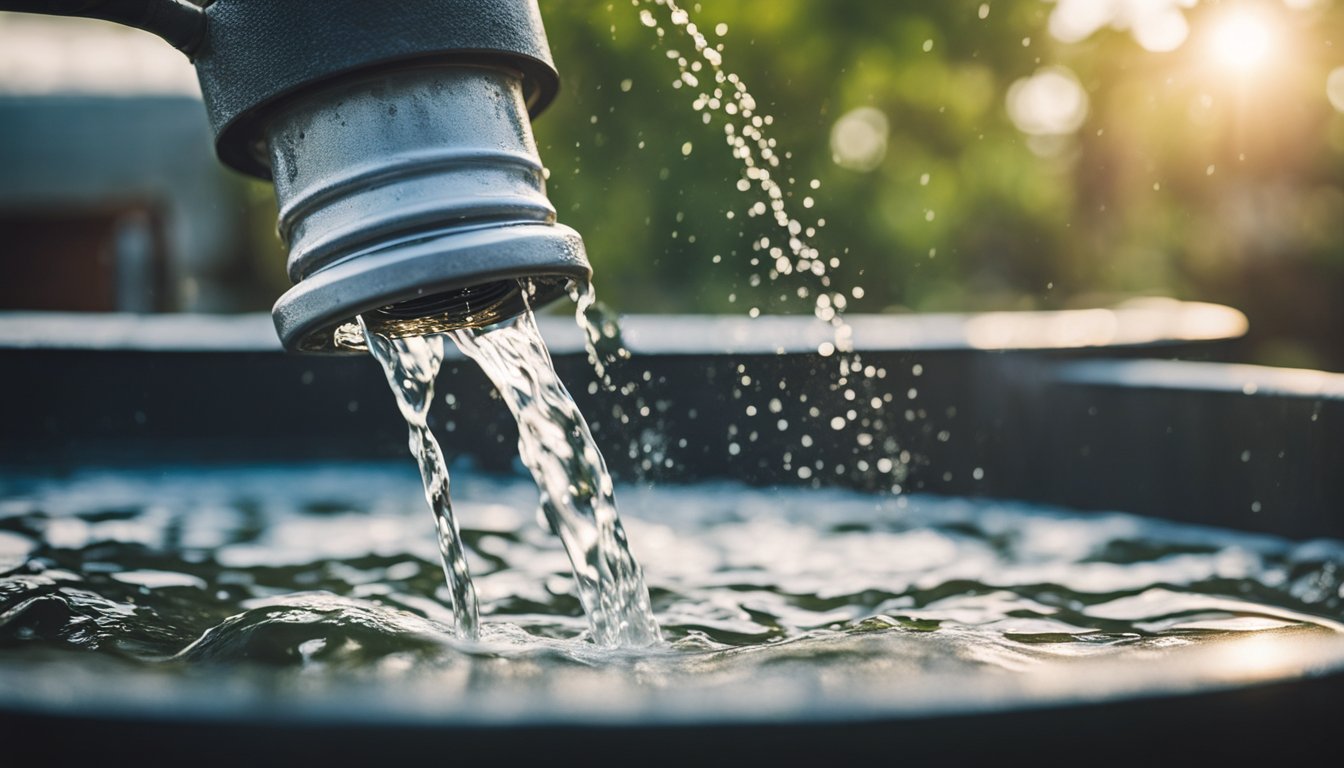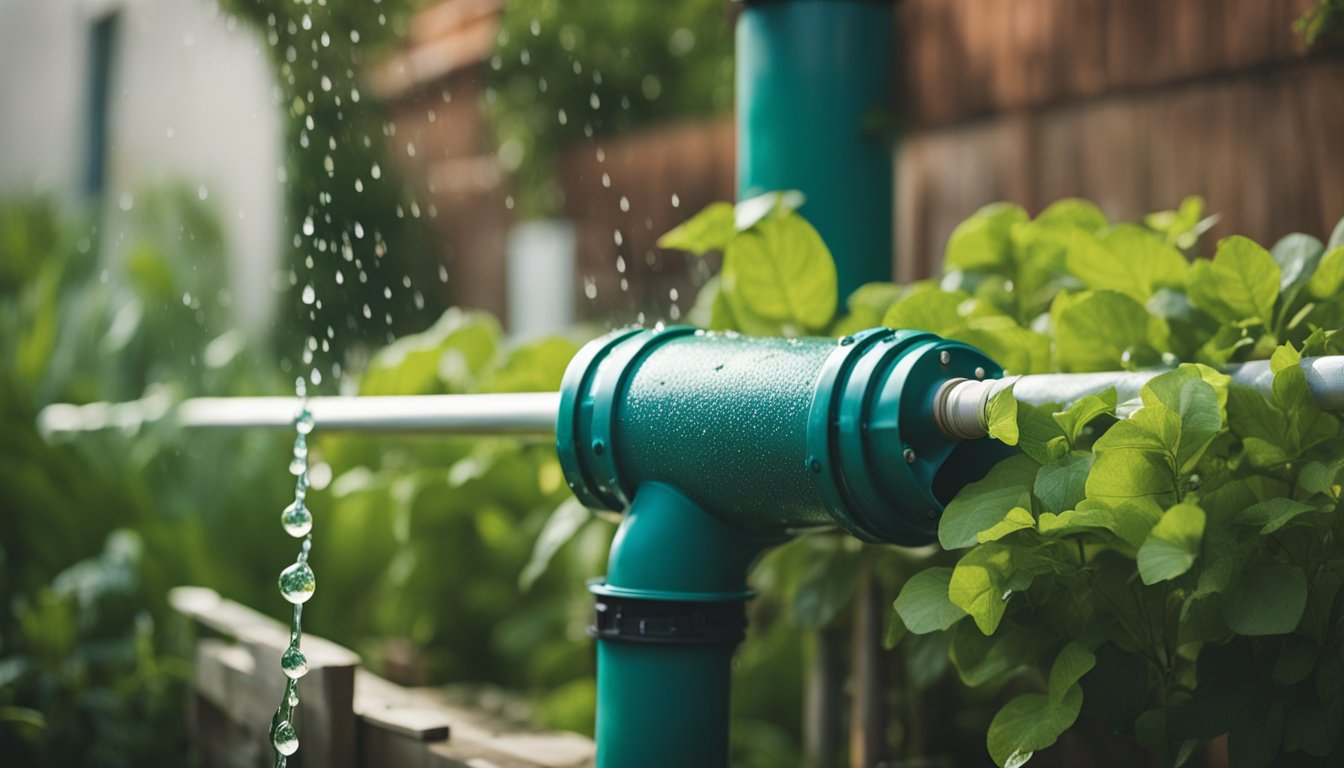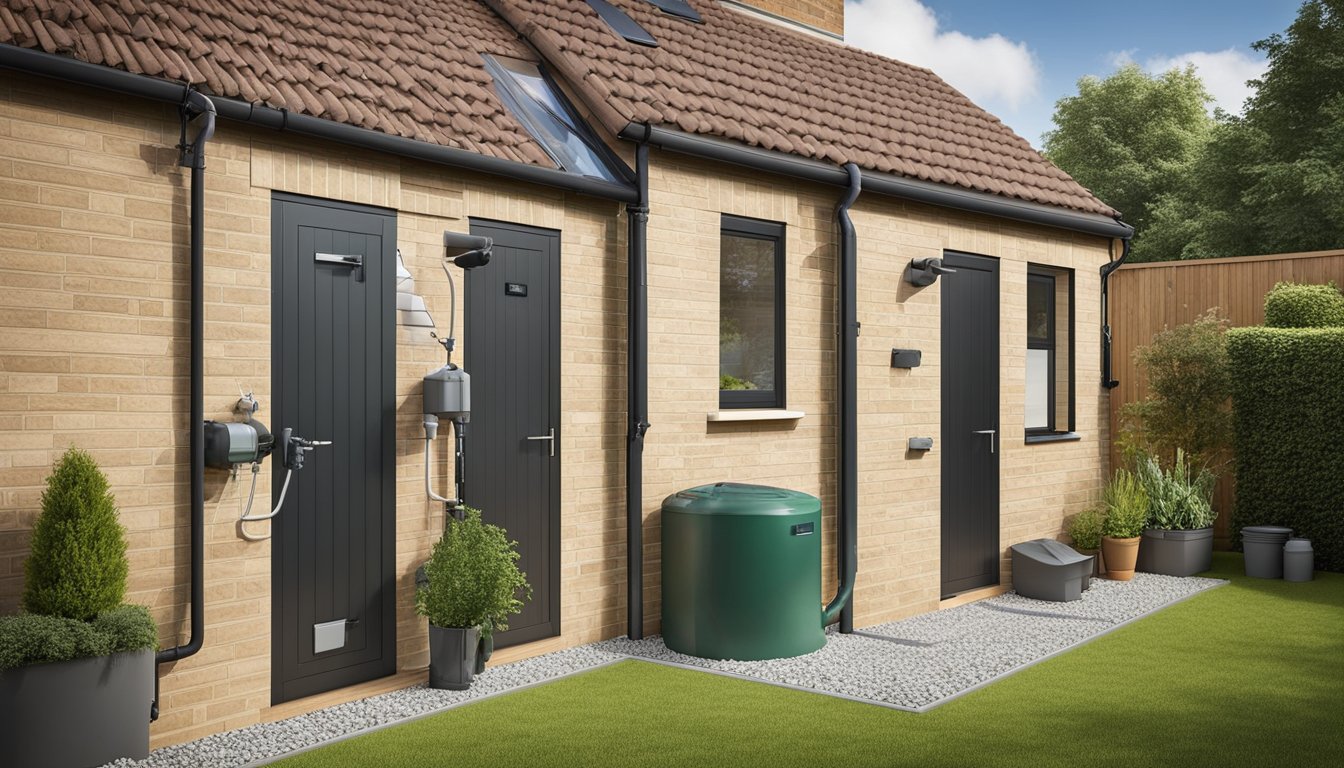Late updated: 03 Aug 2024 09:08
Written by: Eleanor Hartman
Innovative Ways To Use Rainwater In Your UK Home: Sustainable Solutions for Everyday Living
Reducing our water consumption and making use of sustainable practices at home has never been more critical. One of the most effective ways to achieve this is through rainwater harvesting. By implementing innovative techniques to capture and reuse rainwater, we can make a significant impact on our water bills while contributing positively to the environment. Using rainwater for daily household tasks not only conserves water but also benefits us economically.

For those of us living in the UK, where rain is a frequent visitor, rainwater harvesting offers an excellent opportunity to become more self-sufficient. Simple solutions like installing water butts or rain barrels allow us to collect and store rainwater efficiently. This stored water can then be used for tasks such as watering the garden, washing clothes, or even flushing toilets. Taking these steps can provide considerable savings and reduce our dependence on mains water.
In addition to traditional uses, there are several innovative ways to incorporate rainwater into our daily lives. From green roofs that support plant life and absorb rain to sophisticated filtration systems that make rainwater suitable for a variety of household tasks, the possibilities are vast. These methods not only help in conserving water but also promote sustainability and improve our homes' overall efficiency.
Key Takeaways
- Rainwater harvesting can significantly reduce household water consumption.
- Simple systems like water butts make collecting rainwater easy and efficient.
- Innovative uses of rainwater enhance sustainability and save money.
Setting Up a Rainwater Harvesting System
A well-designed rainwater harvesting system involves several key components, ensuring proper collection, storage, and treatment of rainwater for household use. We will break down the process from essential building blocks to maintenance tips.
Essential Components
To set up a rainwater harvesting system, you need:
- Collection Area: Commonly rooftops, fitted with gutters and downspouts.
- Filters: Remove large debris like leaves and dirt. Gutter guards can be installed to protect these filters.
- Storage Tank: Can be a rain barrel, water butt, or large cistern, usually situated above or below ground.
- Pump: Essential for transporting water from the storage tank to its point of use.
Each of these parts needs to be carefully selected based on your budget and requirements. Gutters should be fitted with guards to minimise debris. Filters and screens at various stages prevent clogging and ensure smoother water flow.
Water Purification and Management
Purifying collected rainwater is crucial for safe use. Filtration systems should include multiple stages:
- First Flush Diverter: Prevents the first batch of rainwater, which is likely contaminated, from entering the storage tank.
- Sediment Filter: Removes fine particles.
- Activated Carbon Filter: Eliminates odours and improves taste.
- Disinfection: Methods like UV treatment or adding chlorine ensure water is disinfected and free from bacteria.
Treatment methods should be chosen based on intended use, whether for gardening, household cleaning, or potable purposes. Regularly check and replace filters to maintain water quality.
Installation and Maintenance
Installation begins with:
- Preparing the Site: Clear and level the ground where the storage tank will sit. Add gravel for stability.
- Connecting Components: Link gutters to downspouts and then to the storage system. Install filters and diverters.
- Setting Up Pumps and Overflows: Ensure a reliable pump system and install overflow pipes to manage excess water.
We recommend keeping a maintenance schedule:
- Monthly Checks: Inspect and clean filters and gutters. Ensure pumps function correctly.
- Annual Service: Fully flush the system and check for wear or damage to components.
Regular maintenance extends the system's lifespan and ensures efficient operation. Monitoring water quality periodically, especially after significant rainfall or dry spells, ensures continued safe use.
Innovative Domestic Uses of Harvested Rainwater

Adopting innovative methods for utilising harvested rainwater can significantly reduce our reliance on mains water, lower water bills, and promote sustainable living. Let's explore some practical and sustainable ways to use rainwater in our homes.
Indoor Applications
Using harvested rainwater indoors can greatly decrease our household water usage and contribute to water conservation efforts. One crucial application is toilet flushing. By integrating a rainwater harvesting system with our home plumbing, we can divert rainwater for flushing, saving a substantial amount of potable water.
Another key application is using rainwater for washing clothes. Modern washing machines can be easily adapted to use rainwater, which often results in softer laundry since rainwater is typically low in minerals. We can also filter harvested rainwater for showering and other hygienic uses. While drinking and cooking with rainwater is possible, it requires rigorous filtration to ensure safety.
Gardening and Outdoor Usage
The garden is an ideal place to make the most of our collected rainwater. For garden watering, rain barrels and water butts connected to drain pipes can store rainwater, allowing us to use it efficiently with watering cans or an irrigation system. Using rainwater for this purpose not only keeps our plants hydrated but also reduces the dependence on mains water.
We can also set up an automatic irrigation system to utilise harvested rainwater, ensuring our garden receives regular watering without constant manual intervention. This is particularly beneficial for potted plants and larger garden areas. Moreover, implementing sustainable garden ideas, such as rain gardens or using rain chains, helps manage overflows and replenishes groundwater.
Replenishing Nature
Harvested rainwater can contribute significantly to replenishing natural resources. One important technique is creating a rain garden, a landscaped area designed to absorb rainwater and recharge groundwater. This method not only supports plant life but also prevents waterlogging and erosion, making our gardens more sustainable.
In addition, we can use rainwater to support local wildlife by maintaining bird baths and small ponds. These natural habitats benefit from fresh rainwater, which is free from contaminants often found in tap water. Aligning our domestic rainwater harvesting efforts with the needs of nature creates a harmonious, eco-friendly living environment.
Supplementary Storage Solutions
Efficient storage is crucial for maximising the benefits of harvested rainwater. Underground tanks can store large quantities of rainwater, which can be used during dry periods or times of water shortage. This setup is particularly useful for maintaining a consistent water supply for household and garden needs.
For those with limited space, water barrels or rain chains offer viable alternatives. These systems collect and store rainwater on a smaller scale and can be easily integrated with existing drain systems. Ensuring we have proper storage solutions maximises the utility of harvested rainwater and supports sustainable water management practices.
Frequently Asked Questions

Rainwater harvesting offers several opportunities for UK households to reduce water usage and promote sustainability. In this section, we address common concerns and queries related to the implementation, benefits, and legalities of using rainwater in the UK.
What are the legal regulations for collecting rainwater in the UK?
In the UK, it's generally legal to collect rainwater for non-potable uses such as flushing toilets and garden irrigation. However, regulations may vary by local council. It’s crucial to check with your local authorities to ensure you comply with any specific guidelines or restrictions.
How can I implement a rainwater harvesting system in my UK home?
To implement a rainwater harvesting system, start by installing a water butt or tank to collect runoff from your roof. Ensure you have proper filtration to remove debris. For more extensive systems, you might need piping and potential roof modifications. Professional installation can ensure efficiency and compliance with local regulations.
What are the primary benefits of rainwater harvesting for UK households?
Rainwater harvesting can significantly reduce your mains water consumption, leading to lower water bills. It also promotes sustainability by decreasing the strain on public water supply systems. Moreover, storing rainwater can provide a backup water source during droughts or water restrictions.
What are some effective uses of rainwater in residential gardens?
Rainwater is particularly beneficial for watering plants and lawns, as it is free from the chemicals found in tap water. It can also be used for filling ponds, cleaning garden tools, and even in irrigation systems to maintain garden health efficiently.
Can rainwater be utilised indoors, and what are the necessary treatments?
Yes, rainwater can be used indoors for non-potable uses such as toilet flushing and laundry. Proper filtration and disinfection are essential to remove contaminants and ensure the water is safe for these purposes. Installing a dual plumbing system may be required to separate potable and non-potable water supplies.
Is it cost-effective to install a rainwater harvesting system in a UK commercial building?
Installing a rainwater harvesting system in a commercial building can be cost-effective in the long term. Despite the initial setup costs ranging between £2,000 and £3,000, businesses can benefit from reduced water bills and enhanced sustainability credentials. The savings and environmental benefits often justify the investment.